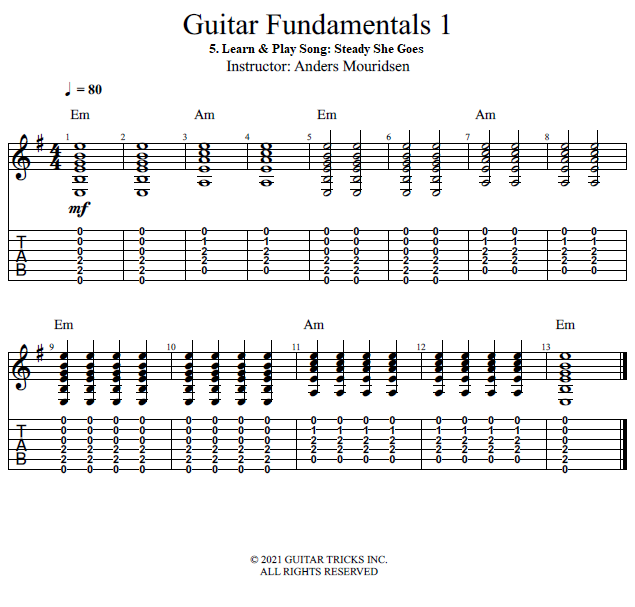Learn & Play Song: Steady She Goes
In this lesson we'll practice some more switching between the different subdivisions. Notice how this adds a new and exciting rhythmic element to our examples!
So we'll keep the basic chord structure really simple, so that we can put all of our focus on the subdivisions. We'll do 2 bars of E minor followed by 2 bars of A minor, and then that's going to repeat 3 times total.
The first time through we'll do our usual whole-notes. The second time through we'll do half notes. The third time through we'll do quarter notes, so one strum for each count. After the third time we'll end on a big E minor chord that we let ring.
Now let's try this together. I'll do the usual one-bar count-in and then we'll start the example. Feel free to just watch and listen before you start playing along, if you prefer.
Congrats on learning how to talk about and work on rhythm. It's a strange thing that you can't really really see, which may explain why so many people completely neglect to work on it. I say this all the time and I'll say it again, playing with good rhythm is one of the only shortcuts that exists in music. If you play with good rhythm you can break all kinds of rules and get away with it. And vice versa, if you play all the best notes in the world and don't use good rhythm it'll never sound truly great!

- Styles:
- Any Style
- Difficulty:
-
